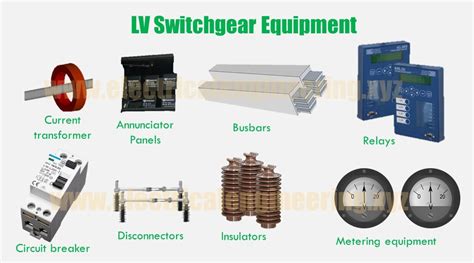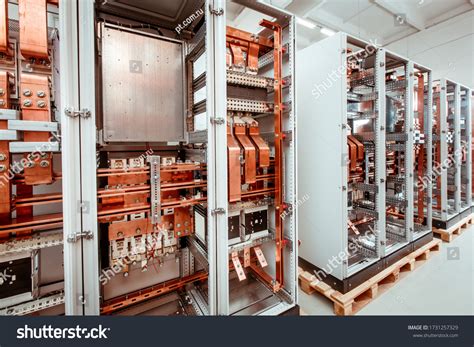lv electrical meaning | types of Lv switchgear lv electrical meaning Different Types of Voltage Level: The different type of voltage notations is being used in a power system transmission and distribution. Let see the type of voltage. Rated Voltage. Nominal Voltage. Extra-low Voltage. We have the 411 from an expert who knows exactly how to buy a Louis Vuitton bag. Read on for expert tips and tricks.
0 · types of Lv switchgear
1 · iec 61439 busbar clearance
2 · electrical Lv panel rack out
3 · electrical Lv panel
4 · electrical Lv meaning
5 · Lv electrical system
6 · Lv electrical components
7 · Lv and mv electrical equipment
Hours. Daily. 24/7. Photo Gallery. Browse Gallery. All the sports action happens at the Cal Sports Lounge in Downtown Las Vegas. Enjoy drinks, games and fun located next to the Cal Sports Book.
Different Types of Voltage Level: The different type of voltage notations is being used in a power system transmission and distribution. Let see the type of .In electrical engineering, low voltage is a relative term, the definition varying by context. Different definitions are used in electric power transmission and distribution, compared with electronics design. Electrical safety codes define "low voltage" circuits that are exempt from the protection required at higher voltages. These definitions vary by country and specific codes or regulations.The low voltage definition is relatively simple: Any electrical system or equipment operating at a voltage level less than or equal to 600 volts. LV systems in the United States are generally .High (HV), Extra- High (EHV) & Ultra-High Voltages (UHV) - 115,000 to 1,100,000 VAC. Medium Voltage (MV) - 2,400 to 69,000 VAC. Low Voltage (LV) - 240 to 600 VAC. Generac issued a .
Different Types of Voltage Level: The different type of voltage notations is being used in a power system transmission and distribution. Let see the type of voltage. Rated Voltage. Nominal Voltage. Extra-low Voltage.The HV/LV Safe Working Practice Guidance course at EPIT is ideal for those seeking to deepen their understanding of safe working practices in both high and low voltage environments. This course provides updated guidance on safety protocols, isolation procedures, and HV/LV switching. Participants gain insights into the latest industry standards .
In electrical engineering, low voltage is a relative term, the definition varying by context. Different definitions are used in electric power transmission and distribution, compared with electronics design.The low voltage definition is relatively simple: Any electrical system or equipment operating at a voltage level less than or equal to 600 volts. LV systems in the United States are generally categorized as those working between 50 and 600 volts.High (HV), Extra- High (EHV) & Ultra-High Voltages (UHV) - 115,000 to 1,100,000 VAC. Medium Voltage (MV) - 2,400 to 69,000 VAC. Low Voltage (LV) - 240 to 600 VAC. Generac issued a white paper titled Medium Voltage On-Site Generation Overview. The white paper compares NEC to ANSI Standards. Low voltage generally refers to electrical systems operating at a voltage level of 1,000 volts or less. Low voltage encompasses several subcategories in most contexts, including extra-low voltage (ELV), defined as below 50 volts. These systems are often safe for human interaction, making them popular in residential and commercial applications.
Understanding voltage classification is essential for the proper application and safety of electrical systems. Voltage classifications typically include Low Voltage (LV), Medium Voltage (MV), and High Voltage (HV), each serving distinct purposes in power distribution and usage.What is the definition of Low Voltage, Medium Voltage and High Voltage? Electrical power systems can be divided into three main categories: generation, transmission and distribution. Because efficiency considerations each of these categories are operated in . Low voltage systems refer to electrical systems that operate at a voltage level lower than the standard line voltage provided by the utility company. Typically, these systems operate at voltages ranging from 50 to 1000 volts.Low voltage is defined as 50 volts (V) or less. Common low voltages are 12V, 24V, and 48V. Low voltage is normally used for doorbells, garage door opener controls, heating and cooling thermostats, alarm system sensors and controls, outdoor ground lighting, household and automobile batteries.
Different Types of Voltage Level: The different type of voltage notations is being used in a power system transmission and distribution. Let see the type of voltage. Rated Voltage. Nominal Voltage. Extra-low Voltage.
types of Lv switchgear

iec 61439 busbar clearance
The HV/LV Safe Working Practice Guidance course at EPIT is ideal for those seeking to deepen their understanding of safe working practices in both high and low voltage environments. This course provides updated guidance on safety protocols, isolation procedures, and HV/LV switching. Participants gain insights into the latest industry standards .In electrical engineering, low voltage is a relative term, the definition varying by context. Different definitions are used in electric power transmission and distribution, compared with electronics design.

The low voltage definition is relatively simple: Any electrical system or equipment operating at a voltage level less than or equal to 600 volts. LV systems in the United States are generally categorized as those working between 50 and 600 volts.
High (HV), Extra- High (EHV) & Ultra-High Voltages (UHV) - 115,000 to 1,100,000 VAC. Medium Voltage (MV) - 2,400 to 69,000 VAC. Low Voltage (LV) - 240 to 600 VAC. Generac issued a white paper titled Medium Voltage On-Site Generation Overview. The white paper compares NEC to ANSI Standards. Low voltage generally refers to electrical systems operating at a voltage level of 1,000 volts or less. Low voltage encompasses several subcategories in most contexts, including extra-low voltage (ELV), defined as below 50 volts. These systems are often safe for human interaction, making them popular in residential and commercial applications. Understanding voltage classification is essential for the proper application and safety of electrical systems. Voltage classifications typically include Low Voltage (LV), Medium Voltage (MV), and High Voltage (HV), each serving distinct purposes in power distribution and usage.
What is the definition of Low Voltage, Medium Voltage and High Voltage? Electrical power systems can be divided into three main categories: generation, transmission and distribution. Because efficiency considerations each of these categories are operated in . Low voltage systems refer to electrical systems that operate at a voltage level lower than the standard line voltage provided by the utility company. Typically, these systems operate at voltages ranging from 50 to 1000 volts.

electrical Lv panel rack out

macys dolce gabbana sunglasses
Profils. 09.04.2013, 10:27. Sveiki, ļoti nepieciešama jūsu palīdzība, lai tiktu skaidrībā ar to, kādi nodokļi un to piemērošanas kārtība ir pašnodarbinātai personai, kura ir aukle. Stāsts īsumā šāds - esam mainījuši dzīvesvietu uz Ķekavas novadu, kurā darbojas aukles dienests un kurš kompensē 118,70 Ls mēnesī par .
lv electrical meaning|types of Lv switchgear

























